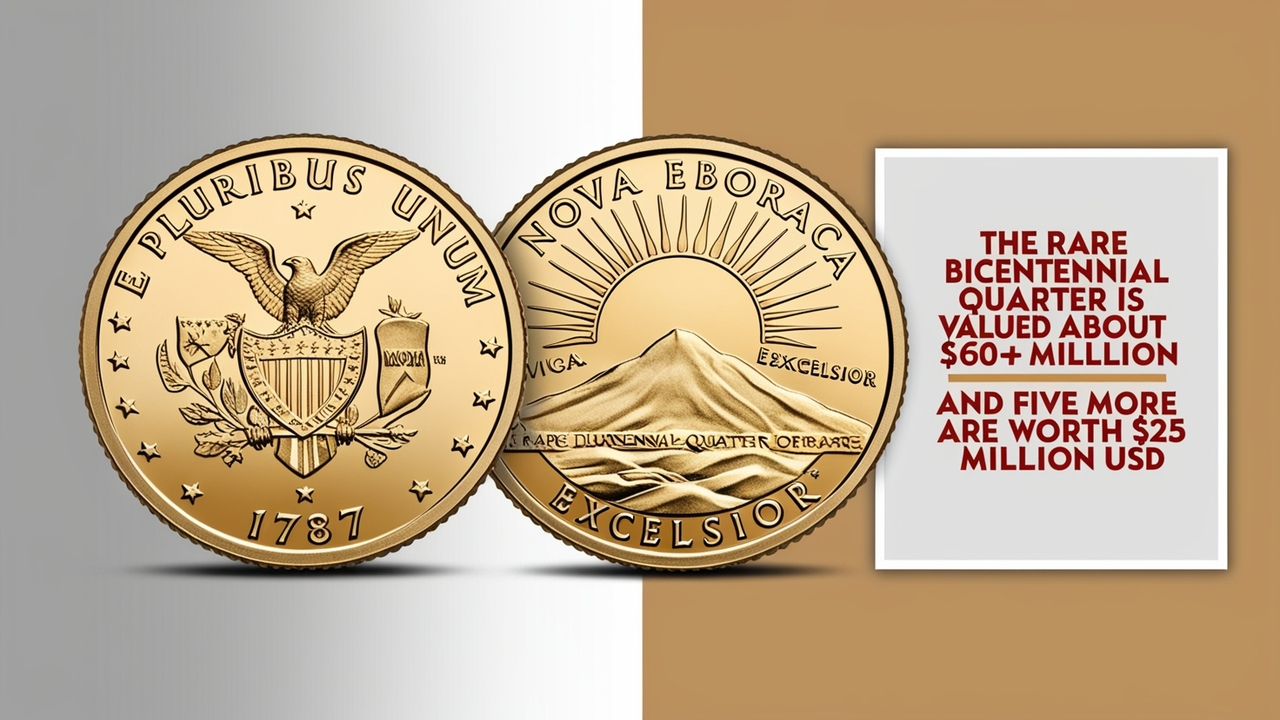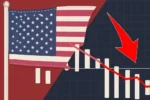The 1976 Bicentennial Quarter is one of the most iconic coins in U.S. history, minted to mark America’s 200th birthday. Featuring a dual date, “1776–1976,” and a special reverse design by Jack L. Ahr, this coin is instantly recognizable. While billions were minted, making most of them common, some recent online claims suggest that a rare Bicentennial Quarter could be worth nearly $60 million, with others valued at over $20 million each. These bold assertions have sparked the curiosity of coin enthusiasts and collectors.
However, are these claims fact or fiction? Let’s dive into the details to separate reality from speculation and uncover the truth behind the Bicentennial Quarter’s value.
The $60 Million Claim: What’s Behind It?
The idea that a Bicentennial Quarter could be worth nearly $60 million seems to have emerged from viral posts and sensational articles online. Often, these claims are based on speculative references to rare minting errors or extremely high-grade specimens.
However, when we look at credible numismatic sources and auction records, there is no evidence supporting such exorbitant figures. No Bicentennial Quarter has ever been sold for anything remotely close to $60 million—or even $20 million.
What Makes a Bicentennial Quarter Valuable?
Although the vast majority of Bicentennial Quarters are worth little more than their face value, certain factors can increase their worth significantly:
- Error Coins: Minting errors such as doubled dies, off-center strikes, or die cracks can make a Bicentennial Quarter more valuable. For instance, a well-preserved error coin can fetch hundreds or even thousands of dollars, depending on rarity and the type of error.
- High-Grade Specimens: Coins graded as MS67 or higher by professional grading services like PCGS or NGC are considered premium and can command higher prices. High-grade Bicentennial Quarters, especially those with a “D” or “S” mintmark, have sold for up to $6,000 at auctions.
- Silver Bicentennial Quarters: The U.S. Mint produced special 40% silver Bicentennial Quarters for collectors, available in proof and uncirculated sets. These silver versions are more valuable than their copper-nickel counterparts. Depending on their condition, silver Bicentennial Quarters can be worth anywhere from $5 to $40, with exceptional specimens reaching higher prices.
The Reality of Bicentennial Quarter Auction Prices
Despite the widespread claims of high-value Bicentennial Quarters, no coins have reached figures like $60 million. Some rare specimens have, however, sold for impressive amounts:
- 1976-S Silver Bicentennial Quarter: A pristine version of this coin has fetched up to $19,200 at auction.
- Error Coins: Bicentennial Quarters with significant errors, such as off-metal strikes, have been known to sell for between $1,000 and $5,000.
- High-Grade Copper-Nickel Quarters: Standard Bicentennial Quarters in MS67+ condition have commanded auction prices between $3,000 and $6,000.
These prices, while high, are far from the $60 million claims circulating online.
Why the $60 Million Claim is Unlikely
The idea of a Bicentennial Quarter worth $60 million raises serious doubts for several reasons:
- Lack of Provenance: No record or credible source exists that supports the sale or appraisal of a Bicentennial Quarter at such an inflated value.
- Minting Numbers: More than 1.6 billion Bicentennial Quarters were minted, making them one of the most common commemorative coins in circulation.
- Market Realities: Even some of the most valuable U.S. coins, such as the 1933 Double Eagle, have sold for less than $20 million. For a Bicentennial Quarter to surpass such iconic coins in value is highly implausible.
FAQs About the Bicentennial Quarter
Q1: Are Bicentennial Quarters rare?
No, Bicentennial Quarters are not particularly rare. Over 1.6 billion were minted, and many are still in circulation. Some types, such as 40% silver proofs or high-grade error coins, can be valuable.
Q2: How much is a standard Bicentennial Quarter worth?
A regular Bicentennial Quarter in circulation is worth just 25 cents. Uncirculated or high-grade specimens may fetch between $1 and $10.
Q3: What makes a Bicentennial Quarter valuable?
Errors during minting, high-quality specimens, and the coin’s composition (e.g., 40% silver versions) can make a Bicentennial Quarter more valuable.
Q4: Has a Bicentennial Quarter ever sold for millions of dollars?
There is no record of a Bicentennial Quarter selling for millions. The most expensive ones have sold for a few thousand dollars at most.
Q5: Where can I sell a Bicentennial Quarter?
You can sell Bicentennial Quarters at coin shops, on platforms like eBay, or through auction houses like Heritage Auctions.
Q6: How do I know if my Bicentennial Quarter is valuable?
Look for minting errors, high silver content, or coins in excellent condition. To get an accurate value, consider having your coin graded by a professional service like PCGS or NGC.
Conclusion
While the idea of a Bicentennial Quarter being worth $60 million is an intriguing fantasy, the reality is much more grounded. Though some rare specimens and error coins can fetch impressive sums, no Bicentennial Quarter has come close to achieving such astronomical values. When it comes to coin collecting, understanding the factors that influence value is key to separating fact from fiction.



